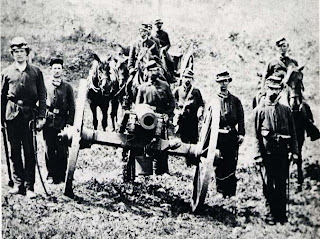A daguerreotype is the use of a silver coated copper plate to create a positive photograph, often taking the appearance of a mirror. Daguerreotypes replaced Niépce's method of heliography, and were prominent through the 1840s and mid-1850s before simpler methods of photography replaced it.
 |
| Daguerreotype of Andrew Jackson, circa 1845 |
2. What is an "albumen" print? What was the main "ingredient" of the albumen process? When did the albumen process die out?
An albumen print is the use of an egg's albumen to create a photographic print from a negative photograph. The albumen fell out of style in the early 1900s.
 |
| Albumen print of the Leaning Tower of Pisa in Pisa, Italy |
3. What is a "stereograph?" When were they popular?
A stereograph is the creation of an illusion of three dimensions on a two dimensional plane. Stereographs slowly rose in popularity from around 1850 until 1900 when the peaked. Stereograph photography declined in the early 1900s with the invention of film.
 |
| Stereograph of a Boston parkway |
4. What is a "carte de visite?" What were they used for?
A carte de visite is a type of small, printed photograph used to store and trade photographs in a manageable fashion. They became popular in the mid-1850s, and were used extensively among soldiers.
 |
| Carte de Viste of Otto von Bismarck |
5. Who were Matthew Brady and Alexander Gardner? They both are notable for what type of photography? When were they active? Post two noteworthy photographs for each photographer.
Mathew Brady, an Irish American, and Alexander Gardner, a Scottish immigrant to America, were both photographers in the 1850s and 1860s. Both are commonly known for being pioneers in photojournalism, particularly during the American Civil War.
 | |||
| Photo of Civil War soldiers with artillery piece - Mathew Brady |
 |
| Photo of a dead Confederate sniper - Alexander Gardner |

